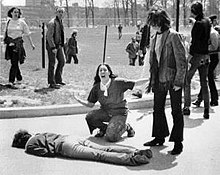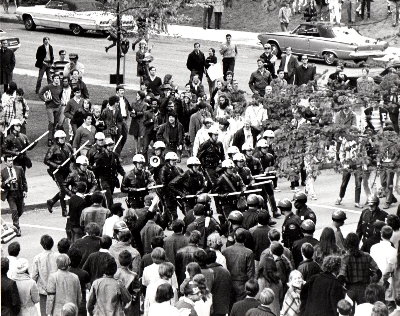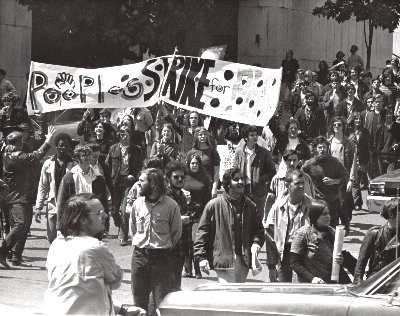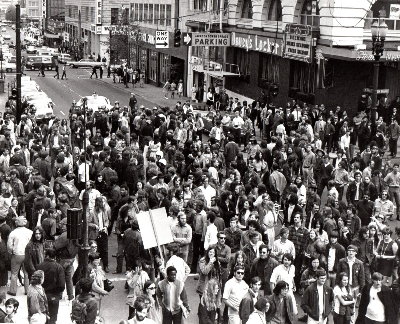BroadwayVik
Active member



Students Massacred by Ohio National Guard o MAY 4, 1970
Allison B. Krause; age 19; fatal left chest wound; died later that day;
Jeffrey Glenn Miller; age 20; shot through the mouth; killed instantly;
William Knox Schroeder; age 19; atal chest wound; died almost an hour later in a hospital while undergoing surgery;
Sandra Lee Scheuer; age 20; fatal neck wound; died a few minutes later from loss of blood.
Related Video: http://www.usatoday.com/news/nation/2010-05-03-kent-state_N.htm" onclick="window.open(this.href);return false;


MAY 11, 1970 o Kent State had come home to Portland State.
In the aftermath of the Kent State shootings, college campuses around the country became a focal point of the national rage. For a number of days, a peaceful encampment on the PSU campus grounds was the center of a student protest activity. City officials decided to remove the students and the symbol of their protest. Pent up rage over the Kent State killings turned the short but violent riot bloody as police and students clashed on the campus and on the streets of Portland.
Related Videos: http://www.kgw.com/video/archive/PSU_riot_downtow_portland_1970-99816629.html" onclick="window.open(this.href);return false; (too brief)
http://www.kgw.com/video/raw/Archive-Video-PSU-1970-protesters-raw-93435274.html" onclick="window.open(this.href);return false;
This is the fire in PSU's belly. This is the ferocity that PSU actually has. This is PSU's true fighting spirit. A film needs to be made about this event to remind Vikings of their true identity.













![crosby-stills-nash-young-ohio[1].jpg](http://www.vinylmania.net/data/files/crosby-stills-nash-young-ohio[1].jpg)





